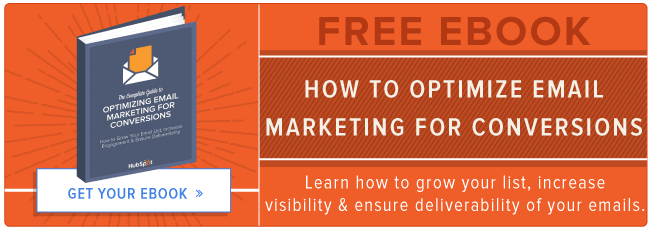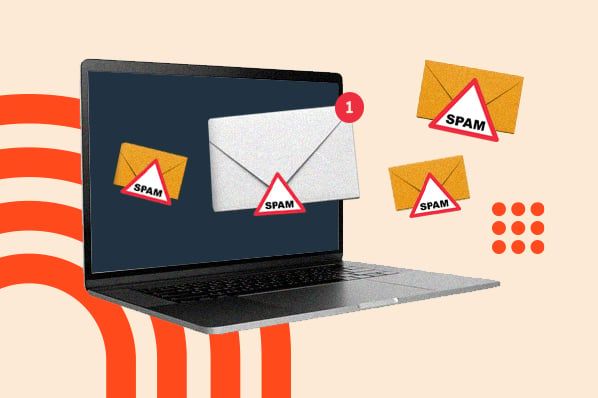Deliverability is an ever-changing and important piece of a strong email marketing strategy. In fact, according to Return Path's recently released Global Email Deliverability Benchmark Report, email deliverability has become increasingly more challenging. A 6% drop in the second half of 2011 brought inbox rates to 76.5% globally, compared to 81% in the first half of 2011. In other words, only 76.5% of commercial emails sent reached recipients' inboxes. Furthermore, email blocked and flagged as spam increased 24%. Eek!
Keeping up with the growing number of email terms can be as tiring as embarking on an obstacle course. So to help you stay up-to-date with the most critical—and sensitive— email marketing information, we’ve put together a list of 19 deliverability terms you should know. This blog post will enrich your email marketing vocabulary and equip you for stellar team discussions and marketing presentations.
We've also organized the information into a SlideShare presentation for you visual learners out there. Feel free to share and embed it on your own blog to spread the email deliverability wisdom!
19 Email Deliverability Terms Every Marketer Should Know
1) Acceptance Rate
The percentage of email messages that are accepted by the mail server. Note that an email being accepted by the mail server does not necessarily mean it will get to an inbox.
2) Black List
A list that denotes a sender as a spammer, making it difficult for the sender to get future emails into an inbox.
3) CAN–SPAM Act
Short for ' Controlling the Assault of Non-Solicited Pornography And Marketing Act of 2003,' it's a law that outlines rules for commercial email, establishes requirements for commercial messages, provides email recipients with the right to make you stop emailing them, and lays out consequences for violations of the Act. You can read more about how to make sure your email adheres to this law in this post.
4) Deliverability
The ability to get an email into the intended recipient’s inbox.
5) DKIM (DomainKeys Identified Mail)
Also known as “digital signature,” this is a method for associating a domain name with an email message, allowing a person, role, or organization to claim some responsibility for the message. A digital signature gives recipients a reason to believe the email message was created by a known sender and was not altered in transit.
6) Double Opt-In
If an email marketer uses a double opt-in, in order for a user to be added to an email list, they get sent an email with a confirmation link after they initially opt in. After the user clicks the link, they are added to the ongoing email communication. This is a recommended way to build a healthy email marketing list.
7) Ham
Email that is generally desired and isn’t considered spam.
8) Hard Bounce
A permanent failure to deliver an email usually due to a non-existent, invalid, or blocked email address. Email addresses that result in hard bounces can negatively impact deliverability and Sender Score (see below), and should be removed from your email lists.
9) Honeypot
A planted email address designed to catch spammers.
10) Open Rate
The percentage of recipients who opened your email message. When someone clicks on an email, an image pixel in the email loads and is counted as an open. (Note: Open rate is no longer considered a reliable metric for measuring email engagement. Click-through rate should also be used when measuring email marketing effectiveness.)
11) Read Length
The length of time when a person opens an email, until they close it.
12) Sender Policy Framework
A Domain Name Server (DNS) record that says an IP or domain can send email on my behalf.
13) Sender Score
Return Path’s free reputation rating of 0-100 for every outgoing mail server IP. Mail servers will check your Sender Score before deciding what to do with your emails. A score of over 90 is good. Read this post for everything email marketers need to know about Sender Score.
14) Single Opt-In
If an email marketer uses a single opt-in, this usually involves taking a user's form entry and immediately adding that person to a live email list.
15) Soft Bounce
Temporary problems with email delivery such as a full inbox or unavailable server. If, after 72 hours, the email still cannot be delivered to the inbox, it turns into a hard bounce.
16) Spam
Not asked for, or not work-safe email. Over 90% of email sent is classified as spam.
17) Spam Report
When someone receives your email and labels it as “spam.”
18) Spamtrap
For a time, email that hits a dead email address will return a hard bounce. When the mail server sees continued traffic going to the dead address, it can turn the email into a spamtrap, accept the email, and report the sender as a spammer.
19) Warming Up an IP
The process by which you send an ever increasing number of emails out of an IP address in order to build up the IP’s reputation to successfully deliver email into an inbox.
Print out this list and always be prepared to enter email marketing conversations with confidence! Did you see any missing terms? Share them with us in the comments section below! And for more information about email deliverability, check out the following blog articles:
- A Marketer's Guide to Getting Past Email Spam Filters
- A 7-Step Guide to Email Deliverability
- Is Your Email List Healthy? Take This 5-Question Sniff Test
- 7 Types of Email Addresses to Delete From Your List NOW!



![Why email whitelisting is important for marketers [+ detailed steps on how to do it]](https://53.fs1.hubspotusercontent-na1.net/hubfs/53/%5BUse%20(1).webp)

![Email Analytics [Research]: 8 Email Marketing Metrics You Should Track](https://53.fs1.hubspotusercontent-na1.net/hubfs/53/Untitled%20design%20(51).jpg)


![How to Embed Video in Email [Quick Tip]](https://53.fs1.hubspotusercontent-na1.net/hubfs/53/embed-video-in-email.jpg)
![23 Email Marketing Tips to Improve Open & Clickthrough Rates [+HubSpot Blog Data]](https://53.fs1.hubspotusercontent-na1.net/hubfs/53/make-emails-more-clickable_8.webp)


![How to Bypass the Toughest Email Spam Filters [Infographic Checklist]](https://53.fs1.hubspotusercontent-na1.net/hubfs/53/marketer%20getting%20email%20past%20spam%20filter.jpg)